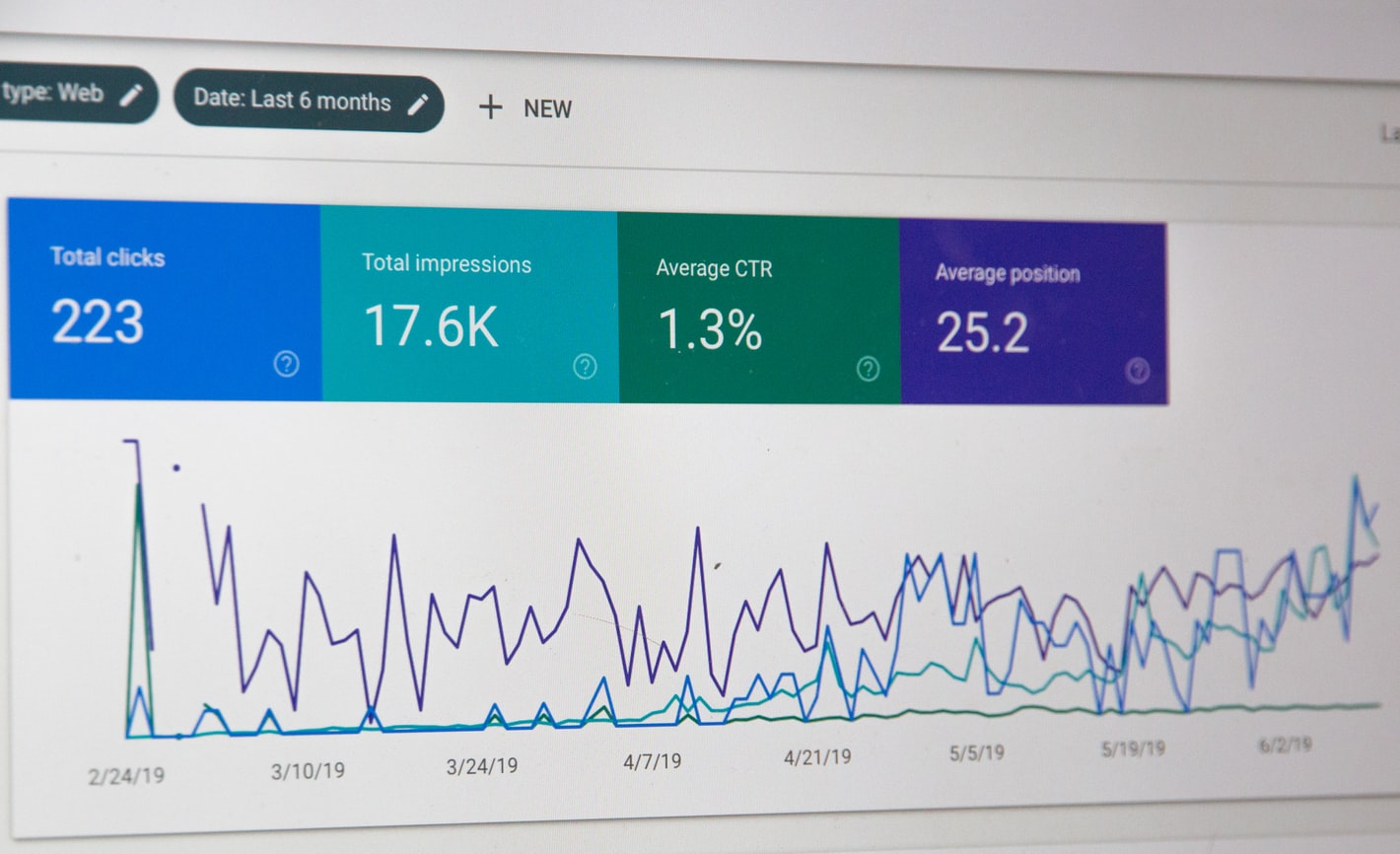
If you’ve ever managed your own PPC campaigns, you know there’s a huge amount of data at your disposal. The problem? It’s not always clear which PPC metrics you should focus on, and it’s often difficult to know how to use those metrics to make your campaigns more profitable.
To lend a helping hand, our PPC experts have come up with a list of the most important PPC metrics to take into account when gauging the success of your PPC campaigns. For ecommerce merchants, there are 9 PPC metrics that are critical to success.
The 9 Most Important PPC Metrics
- Clicks: The number of times a paid ad is clicked
- Cost per Click: The average amount spent per click
- Click Through Rate (CTR): How often your ad is clicked on after being seen
- Quality Score: Google's measurement of the quality and relevance of your ads, keywords, and landing pages.
- Impression Share: How often your ads are displayed for a keyword.
- Conversion rate: How frequently a click results in a sale
- Cost per Conversion: How much it costs to drive each paid conversion
- Total Conversion Value: How much on average an entire conversion is worth
- Return on Ad Spend (ROAS): How much you make (or lose) per dollar spent on advertising.
For a more detailed breakdown of each PPC metric, how to track it on your own campaigns, and (most importantly) how to use it to make your PPC campaigns more profitable, keep reading. For easy reading, we've separated them into keyword and ad-specific PPC metrics, which are a little more basic, and results-based PPC metrics, which are a little more advanced. With their powers combined, they'll give you the actionable info you need to boost your campaign profitability.
Keyword and ad-based PPC metrics
1. Clicks
If improving brand awareness is the main objective of your PPC campaign, clicks and impressions are two metrics that should be on the top of your list. If you're looking to make a sale, then getting a paid ad click is just the beginning of the sales process—but every sale has to start somewhere. The number of clicks you get will depend on how much money you’re spending, of course, but what you really need to monitor are any trends or variations in clicks.

Spikes or slumps in click volume can indicate opportunities or issues with your campaign. If clicks are on the rise, there may be an opportunity to capitalize on increased search volume by upping your budget and getting more aggressive with keyword bids. On the other hand, if clicks are down, there could be issues with your ad text or keywords, or it may be a seasonal lull, which would be a great opportunity to experiment with more out-of-the-box PPC ads.
2. Cost Per Click (CPC)
The average amount you pay each time a person clicks on your paid ad is referred to as Cost per Click (CPC), and it's another useful metric of your PPC success. CPCs vary by industry, but just like clicks, you'll want to keep a close eye on trends. Over the last five years, CPCs have increased across the board, but some industries have risen faster than others.
Also remember that your CPCs are based on the competitiveness of the keywords that you’re using. If you start to see your CPCs increase, consider using longer-tail keywords to attract more targeted traffic, or increasing your maximum bids to stay competitive for your most important keywords.
CPCs are additionally a key metric to look at when determining your optimum budget if you have a specific conversion goal in mind. For example, let’s say your average click costs around $1.00, your average conversion rate is 2%, and you want to get around 20 sales per month. Your monthly budget should be $1,000 (1000 clicks x 2% conversion rate = 20 sales and 1,000 clicks x $1 = $1,000).
3. Click-Through Rate (CTR)
Click-Through Rate (CTR) is a measure of how often your ads are shown versus how often your ads are clicked on (i.e. clicks/impressions). So, for example, if your ads were shown 1,000 times and clicked on 500 times, your CTR would be 50%.

CTRs vary throughout the month, throughout the week, and even throughout the day. Some advertisers even see substantial changes in CTR during the week versus the weekend. CTR can be evaluated on a keyword level or an ad level, and shouldn’t be compared any more frequently than from month to month. Focusing on subtle changes in CTR can derail even the soundest marketing strategy.
4. Quality Score
Quality score is a number that Google assigns to keywords based broadly on the following attributes:
- The past CTR of your keyword and your account overall
- The quality of your landing page (i.e. where you’re sending traffic)
- The relevancy of your keywords to your ad text and to the user’s search
You'll want to pay attention to your quality score because Google considers both quality score and the keyword's bid amount when determining the position of your ad. The exact calculation of how Google determines ad position is complicated, but having a higher quality score means that, in some cases, you can jump a competitor's ad even if that competitor has a higher bid.

In short, quality score is what Google uses to make sure that the highest ad positions don’t just go to advertisers that shell out the most cash—instead, they go to the advertisers that are providing the best experience for searchers. Your quality score will depend on how closely you "hit the mark" for a given keyword—how good of a job you've done delivering a relevant, high-quality ad to a well-targeted audience.
The most effective way to increase your quality score is to do the following:
- Create tightly organized ad groups
- Send traffic to landing pages that are keyword-rich and specific to what’s being advertised
- Use keywords in ad text
- Utilize calls to action and convey value proposition in ad text
5. Impression Share
Impression share measures the percentage of all potential impressions that your ads are getting. For example, if 1,000 searches were done in a day for a keyword of yours, and your ads were shown 800 times for that keyword, you would have an 80% impression share. Conversely, you would have a 20% lost impression share, since you're missing out on 20% of the available impressions.

Google further breaks down lost impression share into two categories:
- Impression share lost due to budget
- Impression share lost due to ad rank
This division enables you to determine whether you should be increasing your daily budget, raising your bids, or increasing your quality scores to achieve better ad position.
Results-based metrics
6. Conversion rate
Conversions are what most advertisers are after, whether they’re in the form of leads or sales. Keep in mind that there’s no solid benchmark for conversion rates across industries; they can vary greatly from advertiser to advertiser. When it comes to conversions and conversion rates, much like the other metrics, trends are the star of the show. Keep in mind that a change in conversion rate can be as simple as seasonality or as complex as a changing business landscape within your industry.
Some quick checks that you can do to investigate decreasing conversion rates include:
- Verifying that the tracking code is still working properly
- Checking destination URLs to make sure landing pages are still functional
- Looking at search queries to see if your ads are showing up for unrelated searches
- Making sure ad text is not outdated (using expired promotional codes, old pricing, etc.)
- Verify that none of your keywords or ads have been disapproved
- Verify that there are no conflicts between positive and negative keywords
7. Cost per Conversion
Cost per Conversion is the actual cost paid to get a sale or a lead. Let’s say that you spent $80 on clicks and got two sales—your resulting Cost per Conversion would be $40. This would be a high Cost per Conversion if you’re selling t-shirts (where the average order might be $20), but a low Cost per Conversion if you’re selling warehouse shelving (where the average order might be $2,000).
For this reason, there’s no singular Cost per Conversion to shoot for when running PPC campaigns. Instead, it all comes down to how much a sale is worth to you, which means you need to look at your profit margins and determine what an acceptable Cost per Conversion is for each of your product lines.

For businesses with a lot of repeat purchases, looking at the lifetime value of a customer is another value that you can use when determining how much a sale is actually worth to your business. For example, say you sell water faucet filters that need to be replaced every few months. In that case, it may be acceptable to have a Cost per Conversion that’s higher than what you’ll make on each individual transaction, because you're nabbing yourself a lifetime customer in the process.
8. Total conversion value
Total conversion value is another important metric to compare between campaigns, ad groups, and even individual keywords. Some business owners find that shoppers who are looking for particular products tend to spend more.
For instance, say you’re running an ATV store and you've noticed that someone looking for a new battery is likely to just buy that battery and leave. On the flip side, you've also noticed customers looking for new headlights tend to also want to upgrade other features at the same time, like tires, mirrors, and decals. Although by themselves, batteries and headlights may cost around the same amount, the total conversion value of the headlights will be higher since the average order value is so much higher.
9. Return on Ad Spend (ROAS)
Return on Ad Spend, or ROAS, is also known colloquially as Return on Investment, or ROI. Although this isn’t technically correct, since true ROI would take into account all of the expenses that you have regarding your PPC (the cost of clicks, fees for management by a third party or agency, fees for the design of display ads, etc.), the idea is the same nonetheless.
ROAS is the return that you get on your PPC expenditures, and you can calculate it by dividing the profit from an ad campaign by the cost of that ad campaign. This is the most important metric because it tells you whether or not you’re breaking even on your investment, as well as what kind of return you can expect if you scale up or down your PPC efforts.
A Master of PPC Metrics
With these 9 critical PPC metrics in mind, you can get a clear picture of your campaign's current performance and learn how to make it better. Or, if you decide you need help with your PPC campaigns, we've got a team of PPC professionals ready to audit your AdWords account and create a personalized PPC success plan for you.











